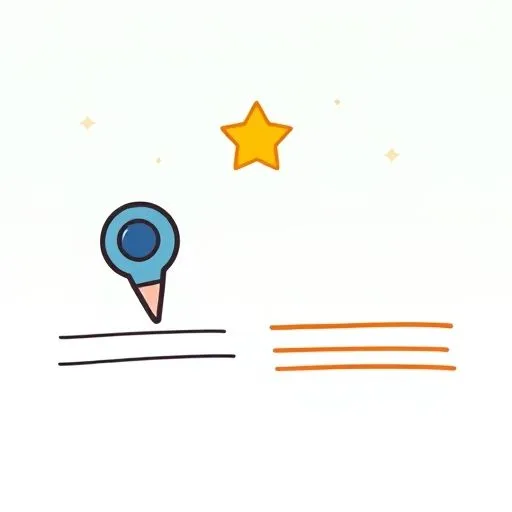
The house is finally still. I can hear the hum of the refrigerator, the faint sound of the wind outside.
I was scrolling earlier, after we finally got the kids to bed, and saw this article about AI writing tools for students.
It made me think of tonight—of one of the kids sitting at the kitchen table, staring at that blank sheet of paper for a school project, their brow all furrowed with worry.
That look on their face… it’s that universal moment of panic, isn’t it? The ‘how do I even start?’ feeling.
And now, there’s this promise of a button that can make the words just… appear. It feels like we’re standing at a new kind of crossroads, trying to figure out how to give our kids the best tools for the future without accidentally taking away the beautiful, messy, essential struggle of finding their own voice.
The Warm-Up, Not the Whole Workout

I was watching our family tonight. They were so frustrated, ready to give up, and we didn’t jump in with answers. We just sat beside them, calm and present.
We didn’t tell them what to write. We just asked, ‘What’s the one thing about this topic you find the most interesting? Not for the teacher, just for you.’ And just like that, a little spark ignited. It got me thinking—what if we treated AI the same way?
We were their warm-up. We helped them stretch their mind just enough to get started on their own.
That’s the part I wonder about. These tools can spit out three different opening sentences in a second.
But can they provide that quiet encouragement?
Can they see the flicker of an idea behind a child’s eyes and gently coax it out?
I imagine us teaching our kids to see AI like a set of jumper cables for their brain—something you use to get the engine started, not something that drives the car for you.
Maybe the rule is, you can ask it for a few starting lines, but then you have to close the laptop and choose the one that feels the most like you, the one that makes you want to write the next sentence yourself.
We’ve always been so good at protecting that spark in them, making sure they know their ideas are the most important part of any project.
That feels like the real work here: teaching them that this technology is just one tool in the box, and their own curiosity is the one that truly builds things.
Finding Their Voice in the Echoes of an Algorithm

I remember helping one of the kids with a book report a while back. The first draft was full of their usual energy—run-on sentences, ideas tumbling over each other. It was pure them.
When we sat down to review it, we didn’t just correct the grammar.
We asked, ‘Does this sentence sound like something you would actually say? Let’s read it out loud.‘ We were teaching them to be their own editor, to listen for their own voice.
That’s exactly what worries me with AI editing—it might smooth out the personality too.
It might change a wonderfully quirky phrase like ‘the knight was super-duper brave’ into something technically better but emotionally bland, like ‘the knight was exceptionally courageous.’ Your way teaches discernment.
It teaches that writing isn’t just about being correct; it’s about being authentic.
I hope we can teach our kids to approach AI suggestions with that same critical ear. To ask, ‘Okay, that’s one way to say it, but is it my way?‘ To see it as a set of suggestions from a very smart, but very impersonal, tutor.
The real lesson isn’t accepting the edit; it’s understanding why the suggestion was made, and then deciding if it serves the story they truly want to tell.
We’ve always instinctively known that the goal isn’t a perfect paper, but a more confident and capable child.
Protecting the Beautiful, Unscripted Mess

The biggest thing that sticks with me is this quiet fear in the background—the worry that over-reliance on these tools could chip away at their ability to think critically, to sit with a problem and wrestle with it. It’s the mental equivalent of always using a calculator and forgetting how to do math in your head.
The struggle is part of the learning. The frustration of staring at that blank page is what makes the breakthrough of that first sentence feel so triumphant.
And that’s where we see our wisdom shining through the most. We are fiercely protective of their unique, unscripted humanity. When one of our kids insists that the sky in their drawing should be green with purple clouds, we don’t correct them. We ask them to tell us about that sky. We celebrate their perspective. It’s like our family dinners—mixing traditional flavors with new twists to create something uniquely ours.
No AI can replicate a child’s lived experience—the memory of how the rain smelled on the pavement, the funny way the dog snores, the specific feeling of being picked first for a team. That’s their magic. That’s the wellspring of all true creativity.
I think our job, as we navigate this, is to be the guardians of that wellspring. To make sure the first draft always comes from their heart, not from a prompt. To constantly remind them that while a machine can assemble facts, only they can tell a story with feeling, with humor, with the beautifully messy truth of their own life. And that truth? It’s pure magic, something no algorithm can ever capture.
We do that every single day, just by seeing them for who they are.
And that, I believe, will always be our family’s true North Star—guiding us through any tech storm with heart, hope, and the unwavering light of their unique voices.
Source: ChatGPT: Why do most of your users ask for help writing – prose, not code?, The Register, 2025/09/16 06:13:49Latest Posts
